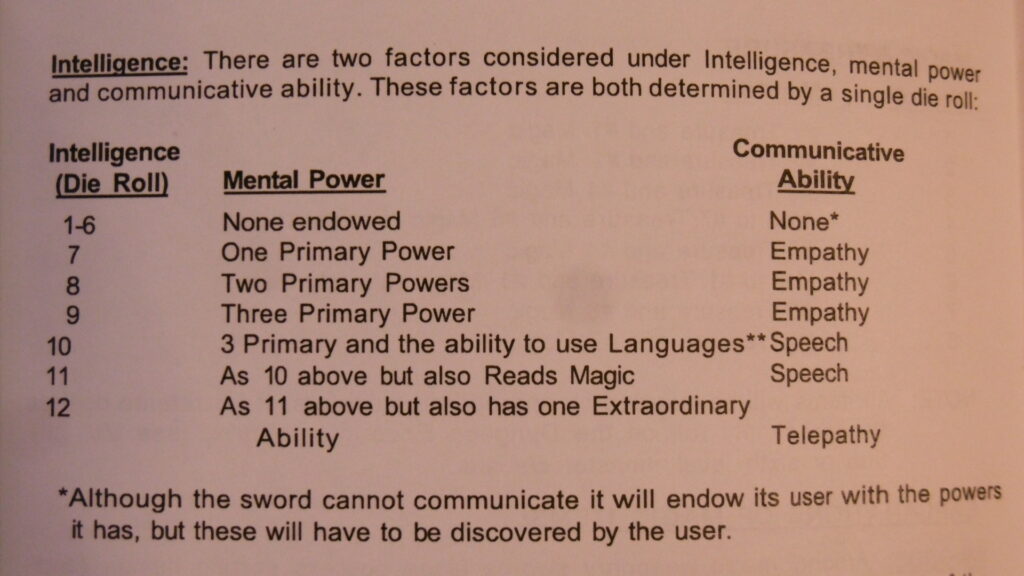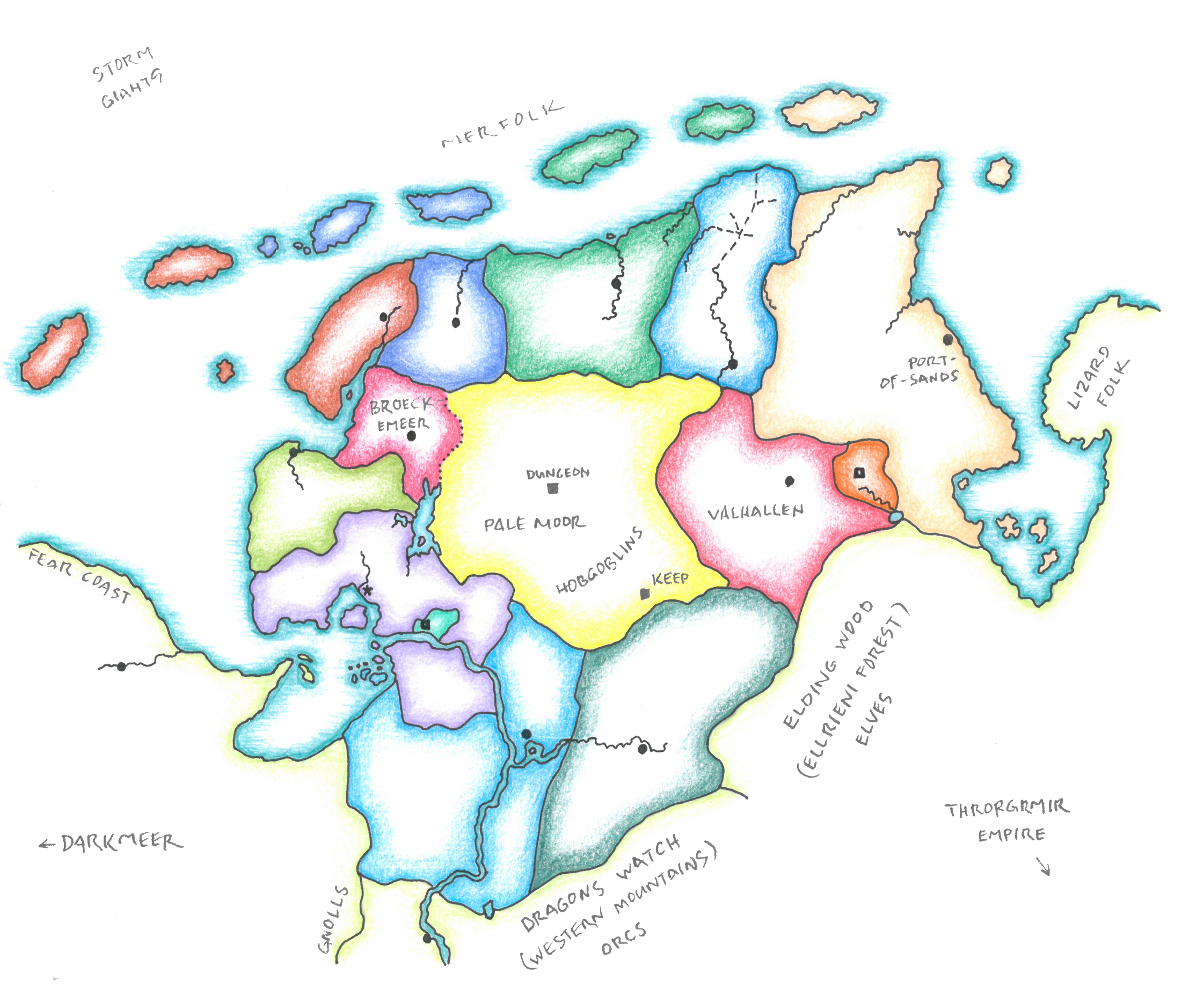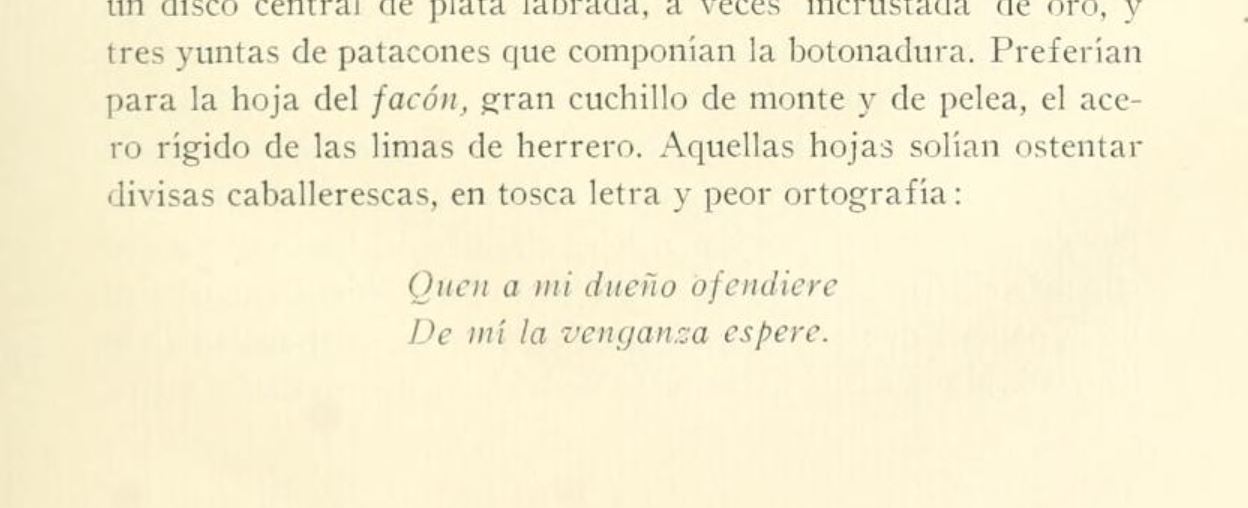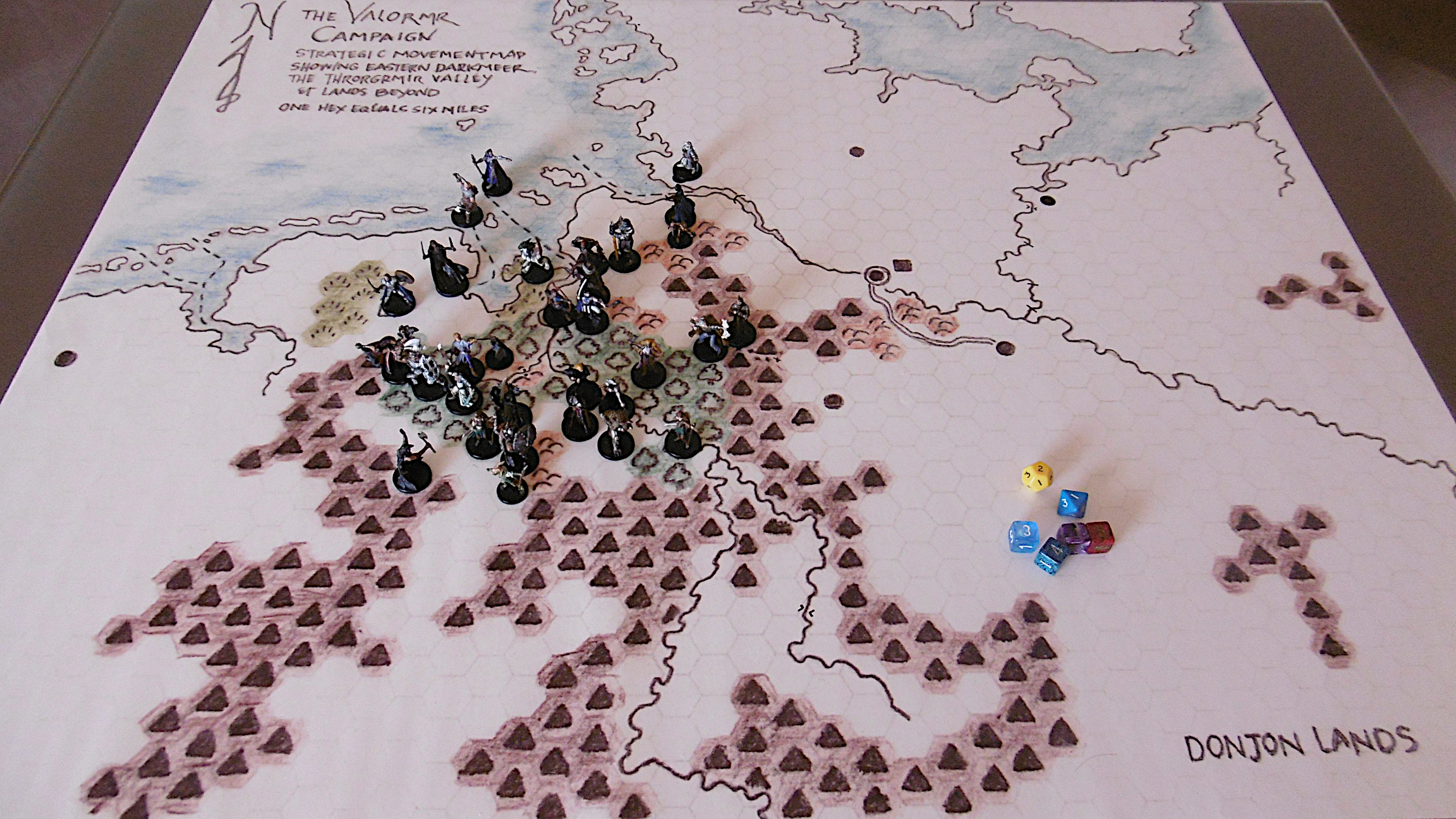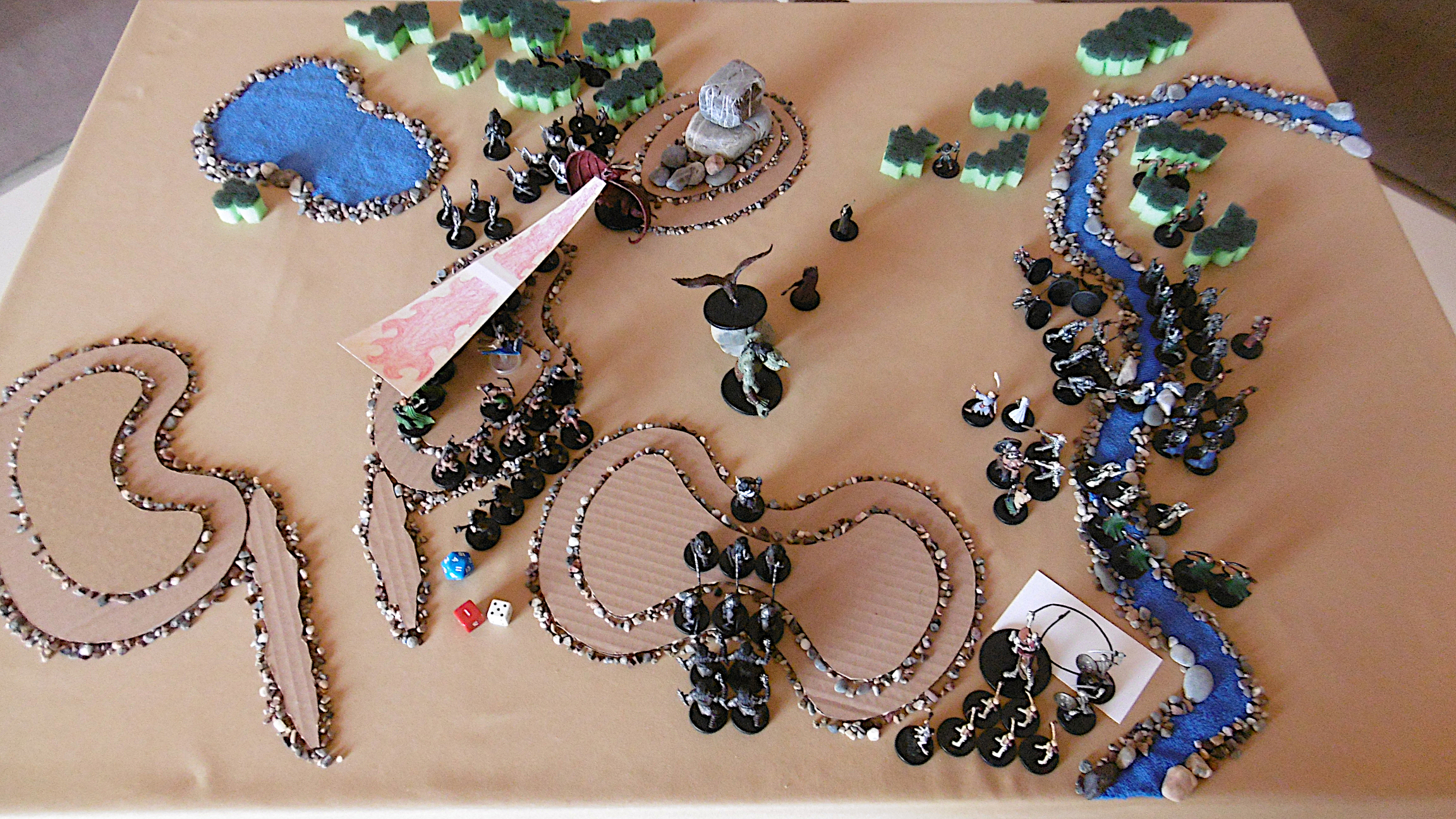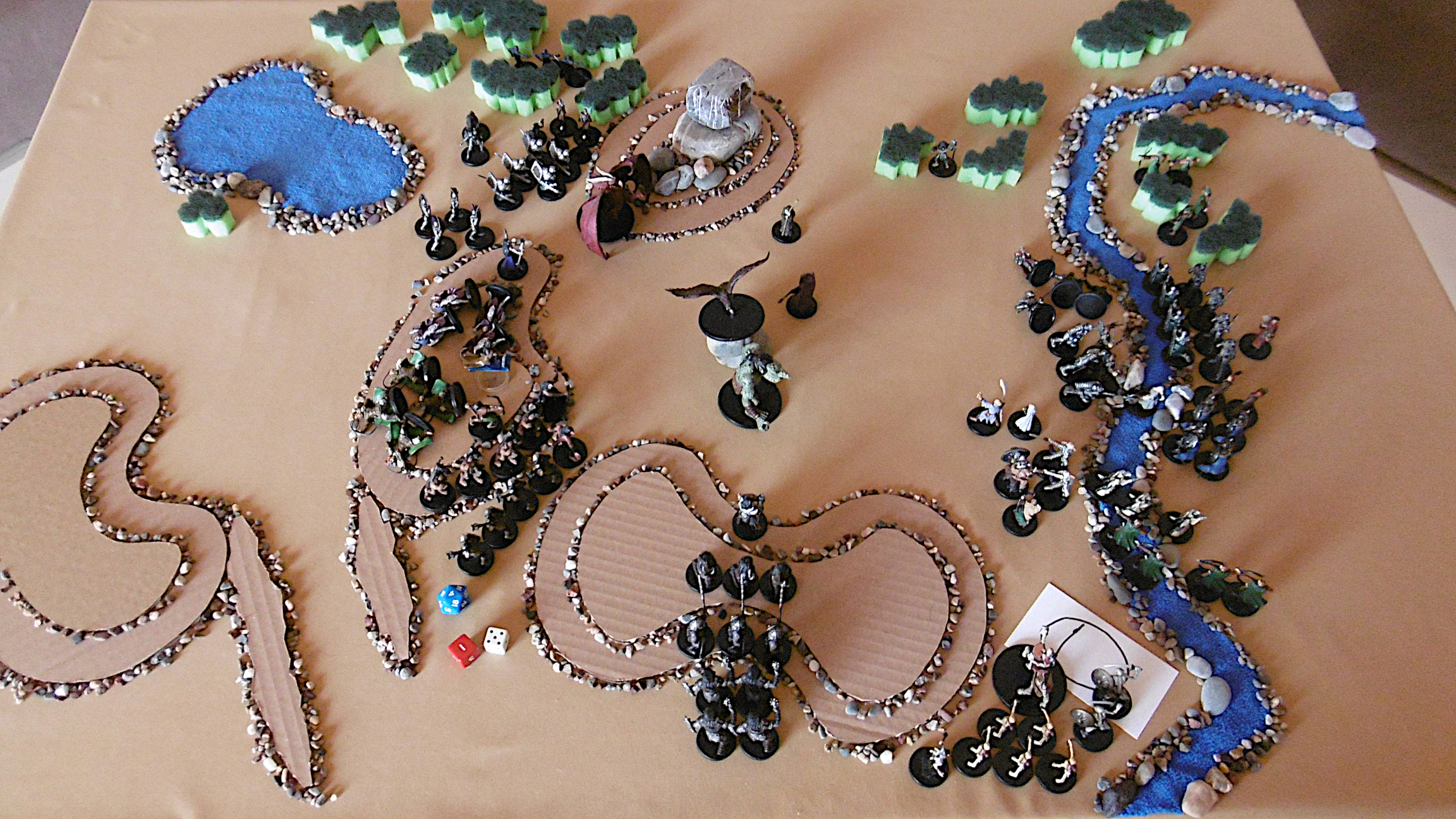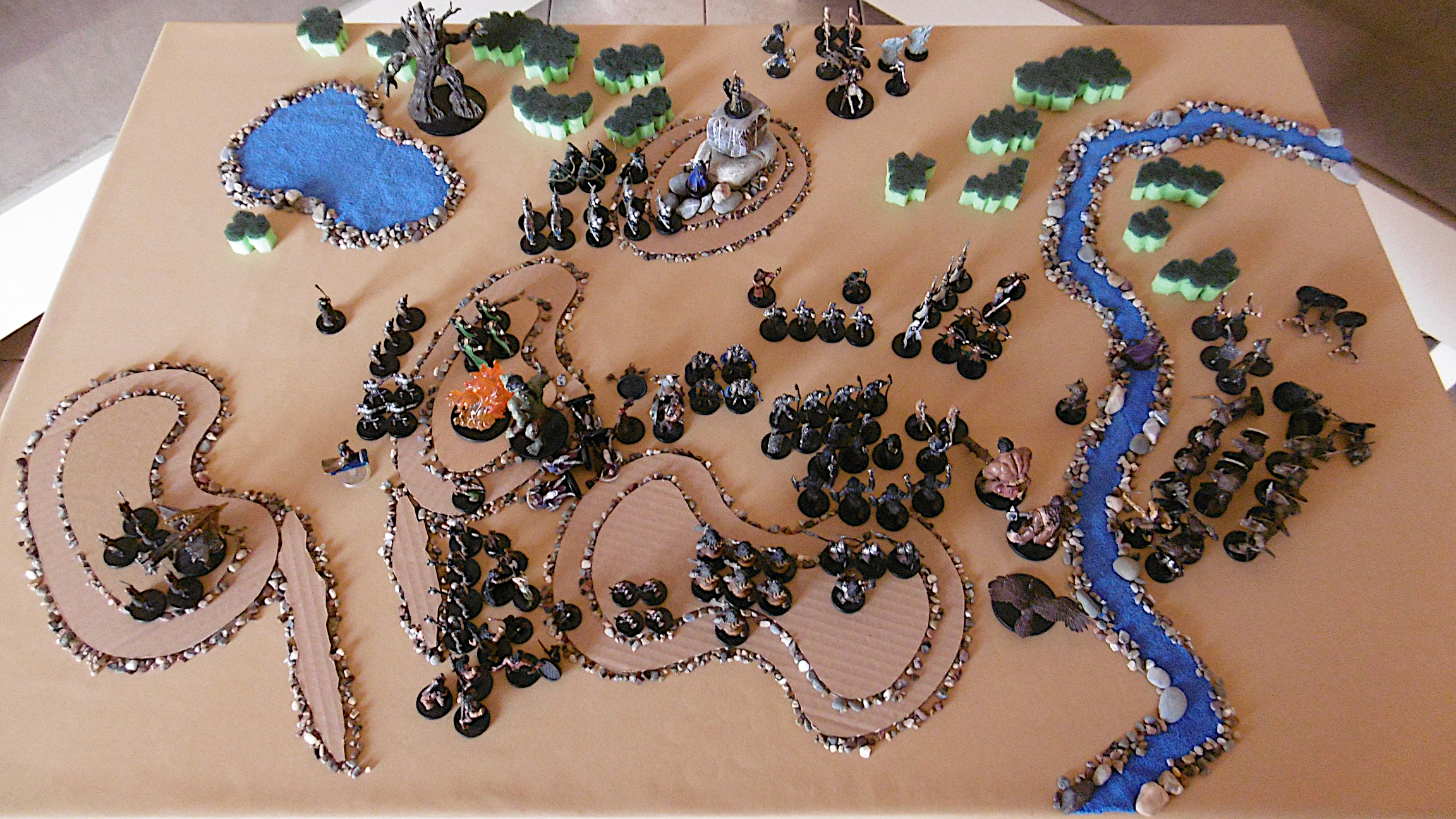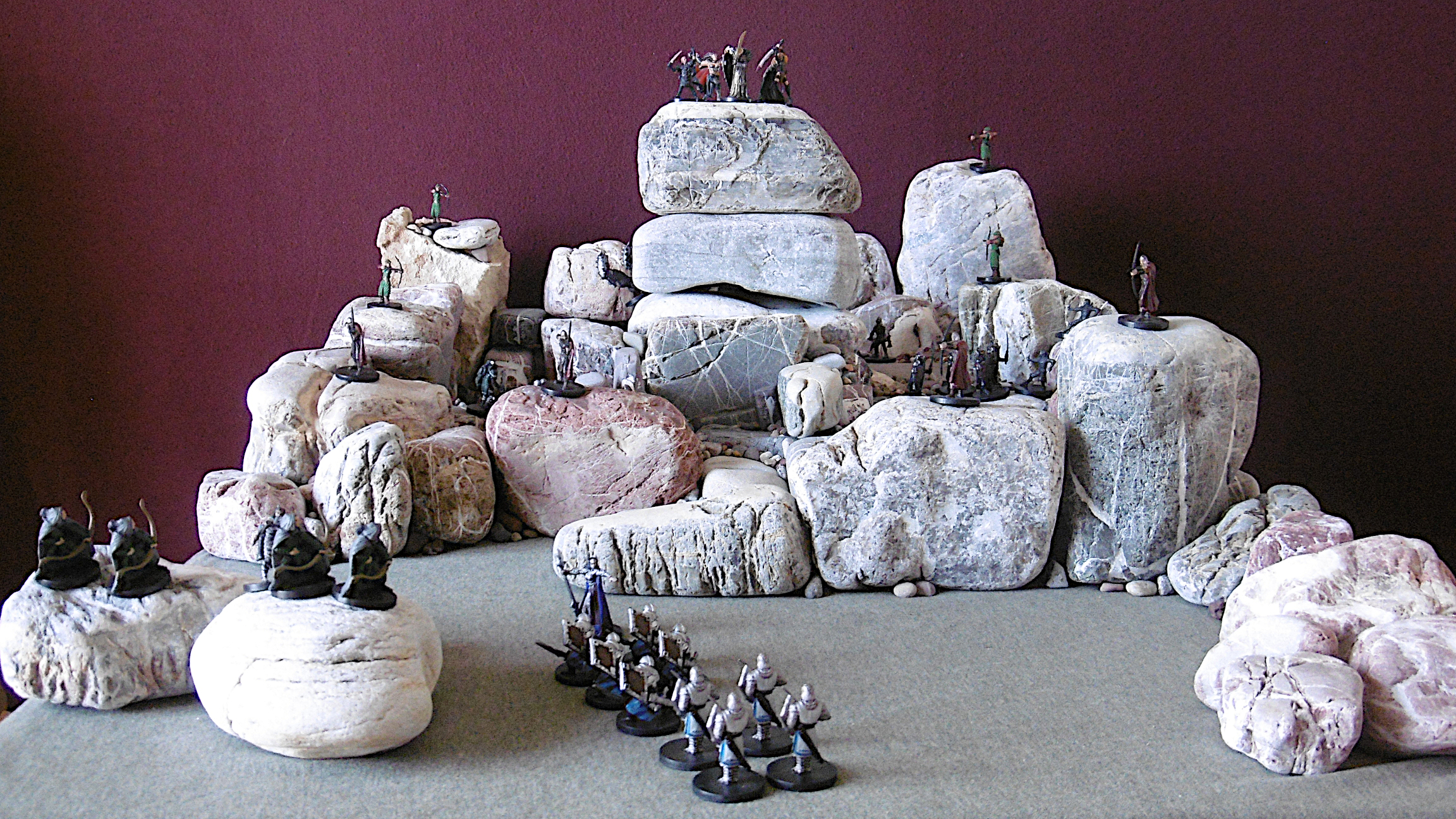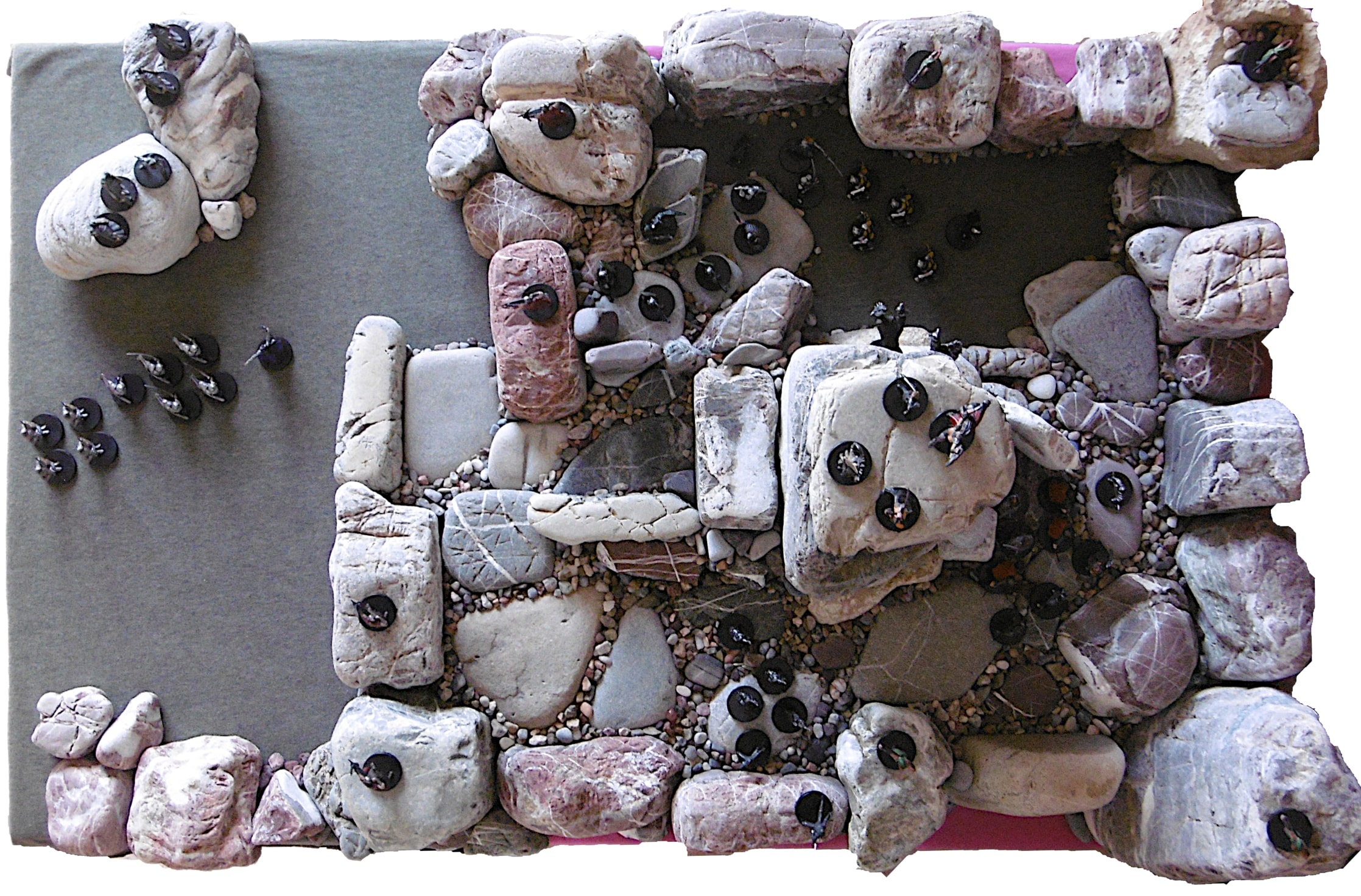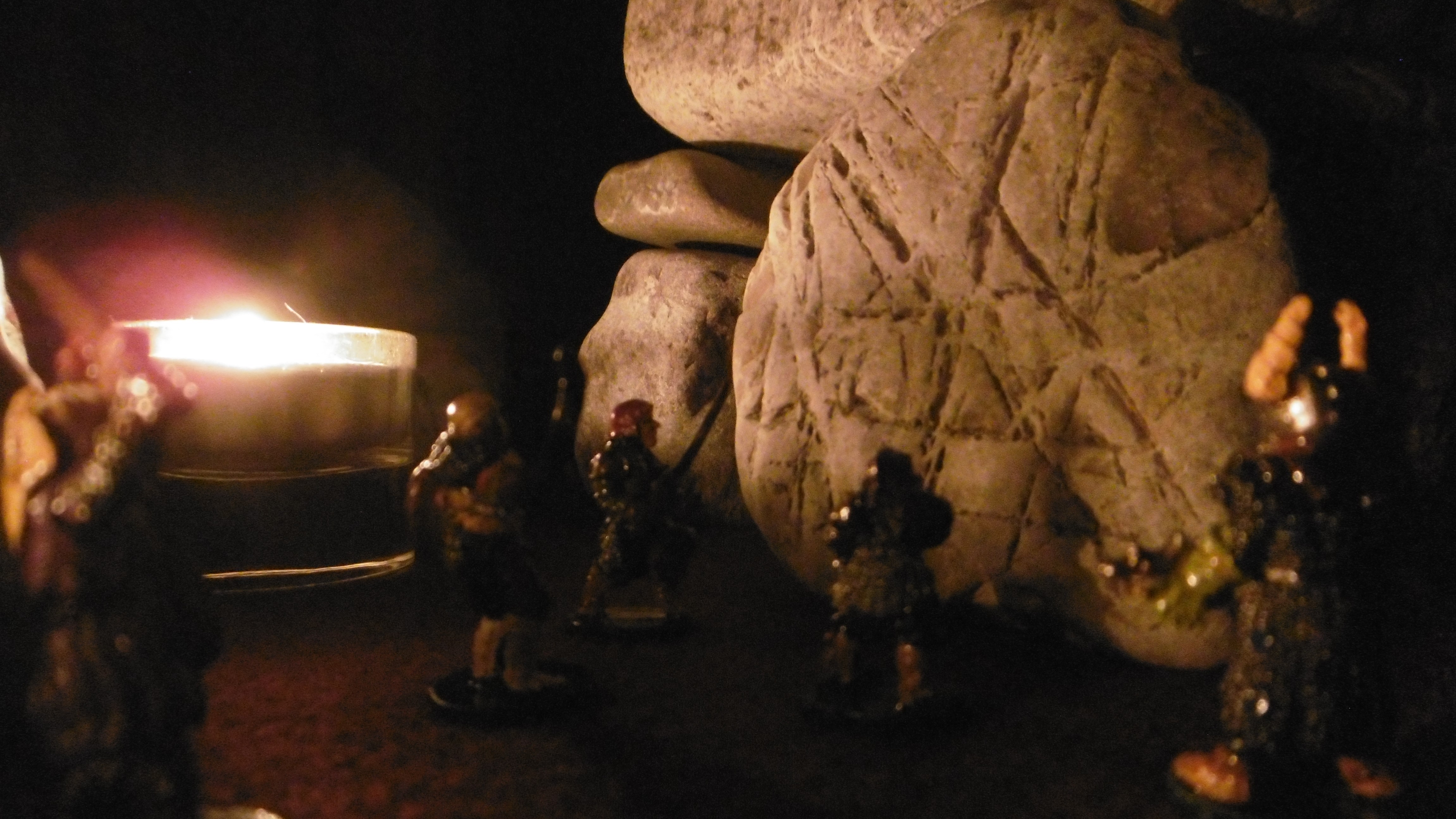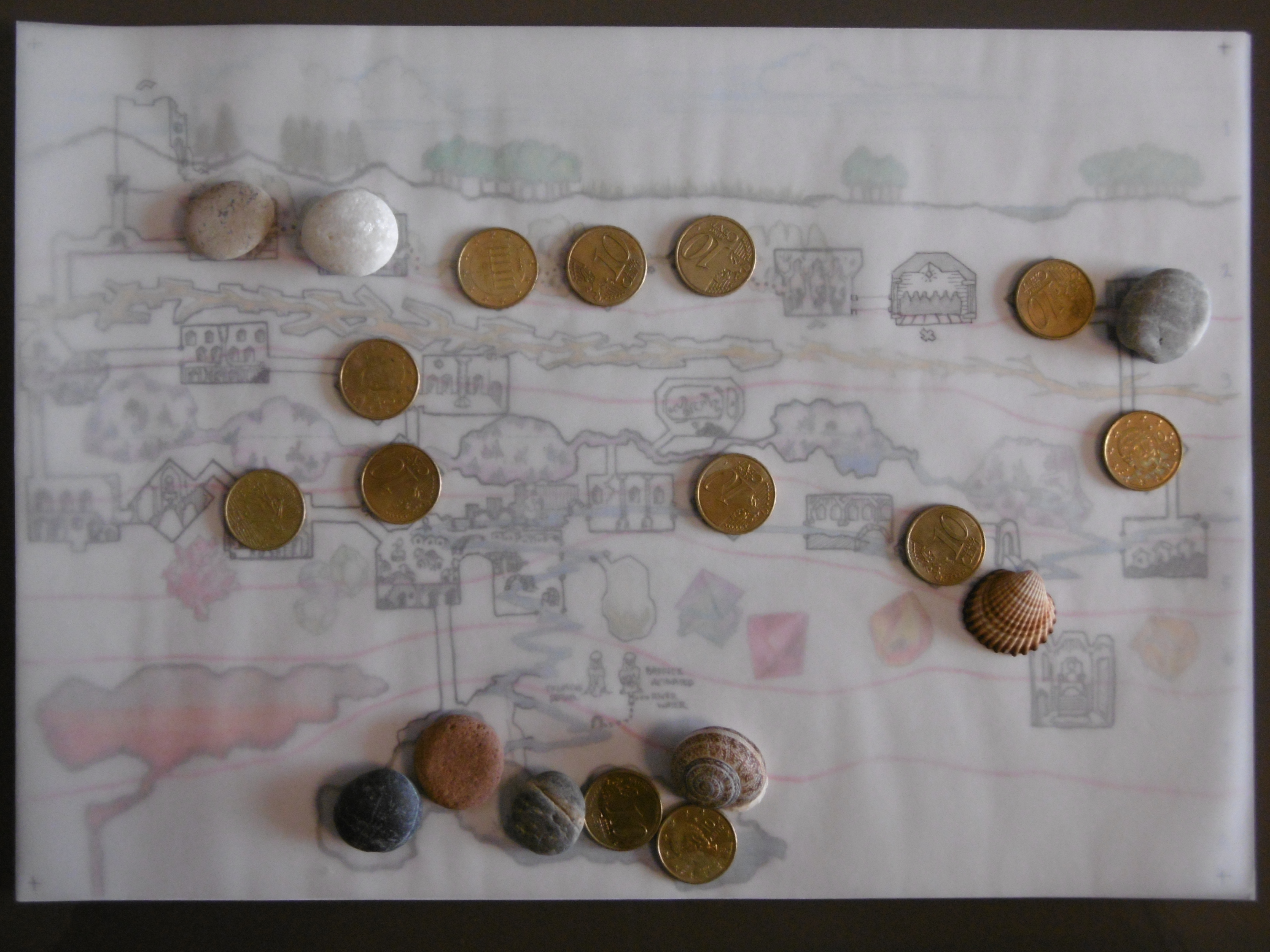Here I sketch a few details in broad strokes. I’m saving a rumor table for the final article, which pulls previous articles together into a campaign background.
Reading Map
This is the seventh article of a series outlining a B/X D&D campaign inspired by an old map.
G. FILL IN IMPORTANT DETAILS AND POINTS OF INTEREST.
Names
In the May 1999 Dungeoncraft installment (Dragon #259), Ray Winninger addresses the naming of people and places in our imagined settings. He suggests several pointers for coming up with appropriate appellations, one of which is to borrow from existing languages. “Remember this number: 400,” Winninger writes:
“That’s the Dewey Decimal Classification number for language. If you go to your local public library and browse around the 430s through about the 490s, you’ll find plenty of foreign-language dictionaries, each of which can be mined for good names.”
Being of the old school, we remember the number as well as the Dewey Decimal System and public libraries, still proud bastions of knowledge and learning. Today, though, no foray to base town is required. Online dictionaries and interactive translators put entire lexicons at our disposal.
We already covered noble titles in “Thirteen Graves.” In “Monstrous Denizens of the Pale Moor,” I made reference to a few names, which I noted on the map (reproduced above). These are examples of the system’s loose application. As source languages for this region, I lean on Frisian, Dutch, German, and Old High German, though other languages are not excluded.
Emden: Many historical names on the map are serviceable for our purpose. Seems to me that Emden (city) and Emder (county) must be related to the Ems (river). Porting all three saves us some trouble. I don’t find any etymology for the root, which leaves us carte blanche to invent a fantastic meaning for “em.”
Broeckemeer: Embellished from Emmius’s map. Suitably suspicious.
Reidermark: The name for the territory now submerged beneath the bay is also lifted from the historical map. I change it from “land” to “mark” as it was, before the flood, a boundary province. At the time of the campaign, it is most often referred to as Lost Reidermark.
Dragons Watch Mountains: Here I resort to English. We came to know them in Wyrm Dawn as the Western Mountains. Throrgrmir dwarves refer to this range as Fjallaheim (mountain home, Old Norse). Since dragons heard rumors of wyrmlings creeping in the dwarven dungeon, these low peaks make convenient roosts within easy flight of the place the Age of Dragons is prophesied to begin.
Elding Wood and Ellriendi Forest: Both names are from the Valormr Campaign. Last summer’s game flew by in a fog of war, but I believe I pulled them somehow out of Old Norse.
Valhallan (misspelled on map): Settled by a warlike clan of religious zealots, the grave takes its name from the chief god’s great hall.
Hekselannen, “The Hex Lands”: “Hekse lannen” is Frisian for “witch lands.” I concatenate to arrive at the proper appellation of the Forsaken Peninsula. From there, simple word play gets the vulgar name.
Grave Subjects
Most human PCs hail from one of the thirteen graves and, as such, are subject to the landgrave and, if the landgrave swears fealty, to the herzog. We established earlier that the graves compete with each other for the Pale Moor’s resources. Persons of the adventuring class, then, are valued subjects, provided they agree to undertake the occasional quest for the hierarchy. A subject who is known to undertake quests for other landgraves is admonished or punished according to the quest’s importance and impact. Penalties range from a small fine to public execution.
A DM might introduce the idea of adventuring licenses—something akin to letters of marque—issued by the landgraves or the herzog, which grant a limited authority to act in the name of the issuer, usually to claim land and other resources.
Total Protonic Reversal
This might qualify as crossing the streams, but there’s definitely a very slim chance we’ll survive.
I think it fairly obvious that, when naming the Keep on the Pale Moor in the Valormr Campaign last year, I had in mind the most famous keep in D&D. Then, in “About the Reedition of Phenster’s,” I mentioned the resemblance of the fictional society’s “Great Halls of Pandemonium” to the Caves of Chaos.
I want to put the two ideas together. I don’t mean that we drop in the Keep and the Caves and be done with it. I mean that we reuse parts of Dungeon Module B2 that fit the scenario. I’m thinking specifically of the Keep map and the concept of the Caves.
The Keep on the Pale Moor
We reuse the map of the borderlands Keep (B2, 16), but the once great fortress, constructed as a staging area and supply point for the Chaos Armies, is now in ruins. Recently, its walls and gates have been crudely reconstructed by its current hobgoblin inhabitants.
Maybe the hobgoblins are aware of the “secret entrance to a long forgotten dungeon” from the cellar beneath area #16 (B2, 25). Or maybe they have reason to believe it exists but haven’t found it yet.
Either way, the key to lifting the Pale Moor curse lies at the bottom of the dungeon. Therefore, the Keep on the Pale Moor becomes the campaign’s initial focal point. The PCs must, first, defeat the hobgoblins and reclaim the keep before the Wraithwright can raise an undead army. Then, using the surface ruins as a base, they must defend the keep, while they descend into the dungeon to lift the curse before the Wraithwright, with his now-raised army, destroys the keep.
The Dungeon: The Great Halls of Pandemonium
After events play out at the keep, the campaign’s focal point shifts to a ruined city of the Greater Ones, taken over by demons, rebuilt in their chaotic fashion, and named by them Pandemonium, after the capital city on their home plane. The cyclopean ruins are now sunk beneath the mires of the Pale Moor.
Because events at the keep will have an impact, it’s too early to tell what the scenario might be when PCs arrive at the Great Halls. The vision, in general terms, is to apply some of the concepts of the Caves of Chaos:
- Each “hall” is a small dungeon, most of them connected to adjacent halls.
- A temple is dedicated to the demons who once lived there. Within the temple complex, evil priests work to call the demons back to the Great Halls.
- The halls are densely populated with creatures of chaos, as the evil priests gather the chaotic horde to fill the ranks of the demonic legion.
To complicate matters, the Warlock abides in a nearby tower. To further his goals, the Warlock uses devils—or devils use the Warlock to further their own.
Evil Factions
There are two major villains in the campaign. Each leads a faction. The Wraithwright, aligned with demons and chaotic evil creatures, may sometimes work with—and sometimes work against—the Warlock, aligned with devils and lawful evil creatures. Departing from B/X rules as written, the remainder of this series assumes a five-point alignment system as in Holmes Basic. (See Demons and Devils and Alignments in “Monstrous Denizens of the Pale Moor.”)
Secret #10: It was not long after the Rending and events of Song of the World Dragon that demons came to the ruined city of the Greater Ones. They sought a powerful object constructed by the now extinct beings. They found it. I don’t know yet exactly what this object is, but its misuse provoked the destruction of the rebuilt demon city of Pandemonium and sent the demons back to their home plane. It’s possible that devils, jealous of the prize, were involved. It’s probable that recovering this artifact is a primary objective of either or both of our villains. There is no doubt, though, that it may eventually be found deep in the sediment beneath the shallow bay where lies Lost Reidermark.
